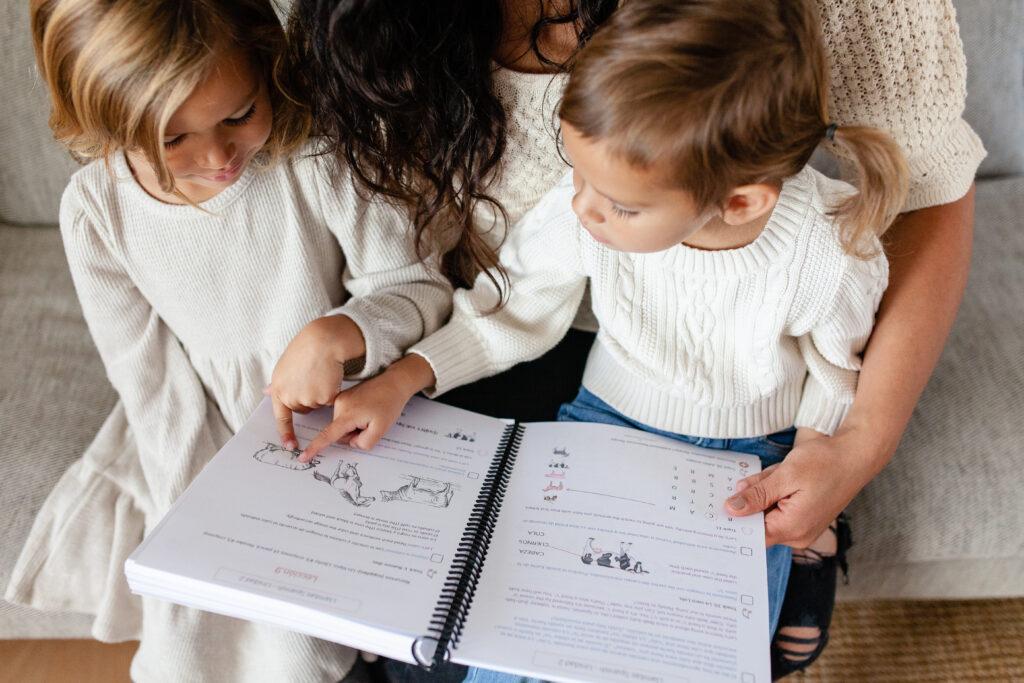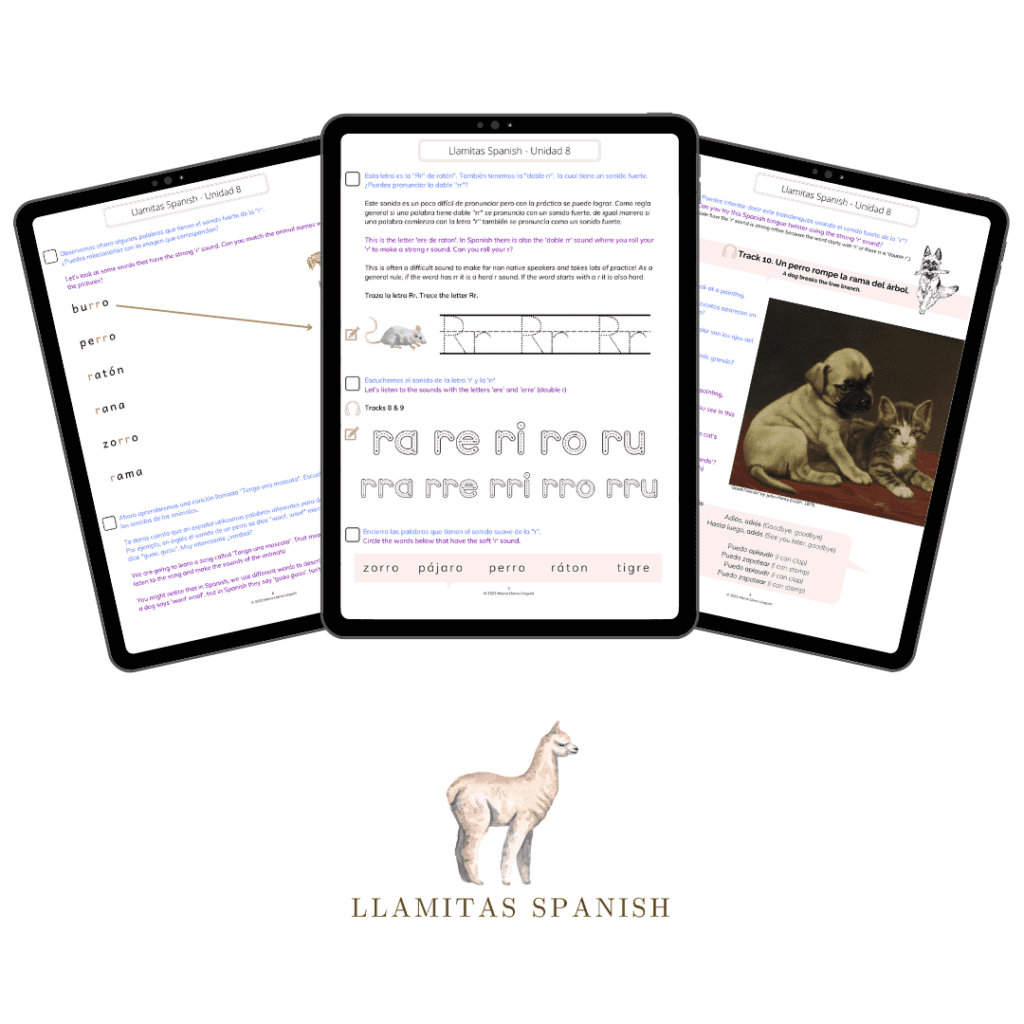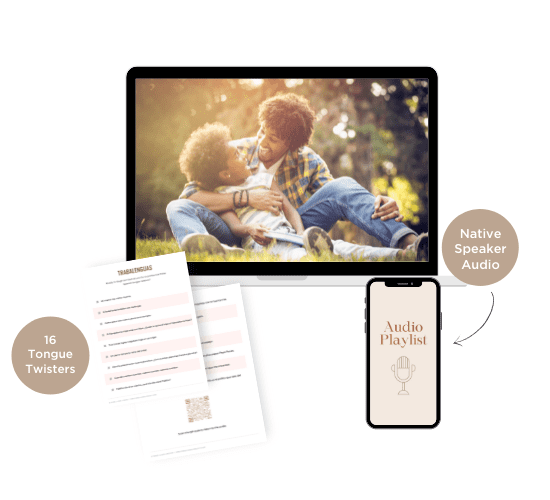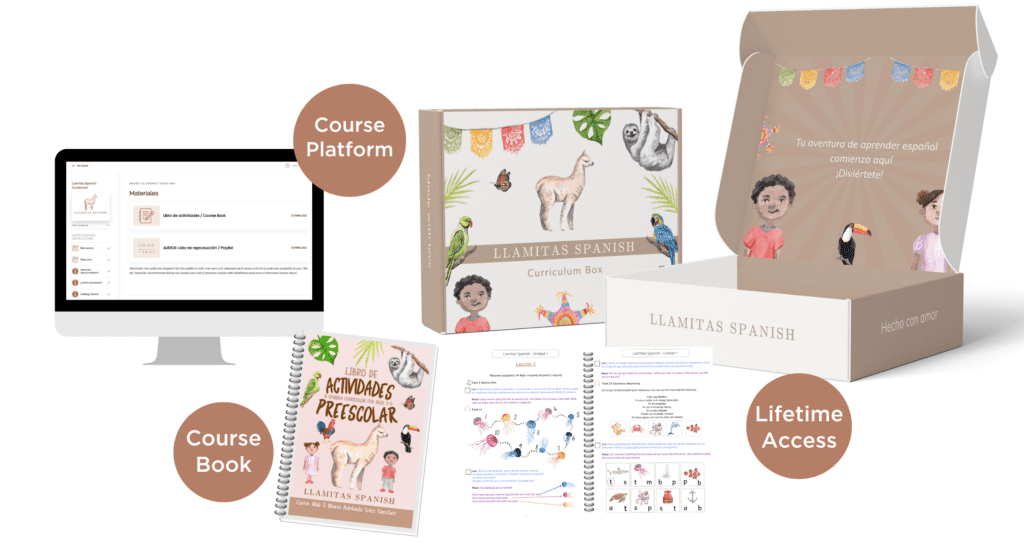In this post: Help your kids improve their Spanish pronunciation by learning how to roll their r.
When compared to the alphabet in English, the Spanish alphabet has one extra letter, the letter ñ. While learning an extra letter doesn’t take much, learning the sounds is where the real difficulty comes in.
Perhaps one of the hardest ones to learn is the dreaded rolling of the ‘r’s’ also referred to by its fancier name, trill.
While this is a challenge for English speakers who aren’t used to rolling their r’s, it’s tricky even for Spanish-speaking children!

It’s necessary to learn this skill not simply because it’s a sound that exists in the Spanish language but because it can also have an impact on expressing yourself accurately.
For instance, the words pero (but) and perro (dog) can be differentiated at a glance but when speaking, saying the word ‘perro’ without rolling the r’s will sound just like ‘pero’ and you can see how easily that changes the meaning completely.
Nonetheless, don’t get worried or feel discouraged if your kids aren’t learning this sound right away as it takes practice. One day they may even surprise you by rolling their r’s perfectly without much effort.
Whether you’re a native Spanish speaker or not, you can take full advantage of the following tips and resources to understand more about the sounds of the Spanish language and help your kids improve their pronunciation.
Table of Contents
Spanish phonetics
As we mentioned earlier, Spanish has its own set of unique sounds just like any other language. These speech sounds are what linguists call the phonetics of a language. In Spanish, some of these include ‘ch’, ‘ll’, and of course ‘rr’ or doble r, which is the sound you roll.
When you’ve spent all your life speaking one language, you fully master those sounds. Therefore, it’s not uncommon that non-native speakers will find some sounds in another language to be unnatural or difficult to produce.
Though you may not be able to fully mask your accent and completely perfect the sounds of another language, with enough practice, you can surely get closer and closer to native-level competency.
Understanding soft r vs. hard r
On the bright side, let’s remember that not all r’s in Spanish have to be rolled (phew!). This is referred to as soft r and is also called a tap as it is made by quickly tapping the roof of your mouth with the tip of your tongue right behind your teeth. When it comes to rolling the r’s, that sound is referred to as hard r.
The following rules will help you to understand when you are expected to use soft r versus hard r.
Use the soft r:
- Between two vowels, for example, in the words ‘oro’ and ‘para’
- When the r comes after a consonant (with the exception of l, n or s). For example, padre’ and ‘libro’
- At the end of a word, for example ‘comer’ and ‘amar’
Use the hard r:
- At the beginning of a word, like in ‘rojo’ or ‘reloj’
- Following the consonants l, n, or s, for example, ‘alrededor’
- For all instances of double r such as in ‘carro’ and ‘perro’
We also encourage you to take a look at this fun and informative YouTube short by Story Learning Spanish.
Tips on how to roll your r
Here are some helpful tips that can help you to pronounce the double r sound in Spanish:
- Learn the correct tongue placement
Place your tongue in the same way as you would if you were to pronounce a soft r but instead of tapping quickly try to force air over your tongue until it vibrates.
One trick if you feel unsure is to keep repeating the English letter d quickly. This will help you to get used to the placement and make an easier transition to rolling your r’s.
- Have fun with tongue twisters
Here’s a Spanish tongue twister you can try with your kids to practice the doble rr:
Un perro rompe la rama del árbol.
Check out our post on Trabalenguas (Tongue Twisters) and download a FREE challenge with audio to practice at home! It’s available in our Freebie Library here!
- Try TruFluency Kids
We’ve found it to be a great resource for native-speaker classes with small groups and in this post, we tell you exactly why. They offer classes for kids from as early as age 4 all the way to age 17 guided by their core v values – fun, flexible and accessible. Try their interactive online Spanish classes today!
Thanks to our partnership, you can even receive a 20% discount on all classes on their website by using the coupon code MAMALLAMA20 (affiliate).
- Practice with videos
When it comes to learning sounds, hearing them repeatedly will be very helpful. Videos are a great way to practice your trill in Spanish while also appealing to visual learners.
Start practicing by listening and repeating with this video by Mi Jardin Infantil
Also this informative video by Escuela de Aprendices.
Then once you’re more comfortable, try learning this catchy song by 123 Andrés.
Ultimately, it’s all about practice and as the saying goes, practice makes perfect. Getting lots of input, together with audio and speaking practice will help you to finally perfect the dreaded rolling of your r’s in Spanish perhaps even faster than you think.
Try our Llamitas Spanish Curriculum
There’s a lot you can teach your kids in Spanish and the excitement of it all can sometimes get the better of you. However, it’s important to focus on building the fundamental skills which later serve as building blocks. One of these skills is early years phonics and we offer a curriculum that will help you to get started.
Related post: Preschool and Kindergarten Spanish Lessons
Our Llamitas Spanish Curriculum lays the foundations in Spanish phonics by providing a comprehensive and sequential course that will slowly build your child’s understanding and confidence in the Spanish alphabet and phonetics.

We start with simpler sounds such as ‘m’ and ‘p’ but build to include the sound r and doble rr as we talk about perros, burros, ranas and ratones.
Your children will learn to identify which words have a soft r and hard r sound while also getting the opportunity to listen to native speaker audio to support their pronunciation and practice.
We’ve also ensured that it’s quite user-friendly for both native and non-native Spanish speakers so you can feel comfortable using it at home. Learn more about our program and enroll today!



